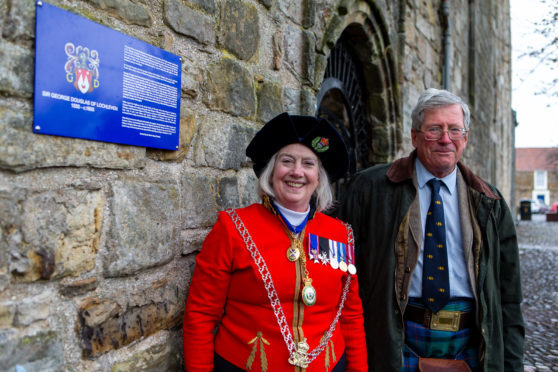Plaques have been unveiled commemorating two unsung heroes of the town of St Andrews.
The plates tell the stories of Sir George Douglas, who helped Mary Queen of Scots escape from Lochleven Castle, and St Andrews University’s first professor of theology James Haldenstone.
They were unveiled by Elizabeth Roads, Snawdoun Herald of the Court of the Lord Lyon, and Dr Katie Stevenson from St Andrews University’s school of history.
In a fitting tribute to Sir George, the event coincided with the 450th anniversary of Mary’s escape on May 2, 1568.
Behind the project was local history enthusiast Colin McAllister.
Mr McAllister wanted residents and visitors to the town to know more about the two figures.
They are represented by coats of arms at Dean’s Court hall of residence, but many people walk past without noticing them.
Sir George’s link with the ancient building, which was originally the residence of the Archdeacon of St Andrews, dates back to the Reformation, when he saved it and made extensive repairs.
He was the younger brother of Sir William Douglas, who owned Lochleven Castle.
A youth called Willie Douglas, believed to be the illegitimate child of Sir William, helped Mary escape on May 2 and the Queen was met by Sir George at the shore.
Haldenstone was prior of St Andrews in 1417 until his death in 1443.
Mr McAllister said: “James Haldenstone was a very important man but is rather overlooked.
“He was the first professor and dean of theology at the newly formed university.”
The signs were made by Ricky Bruce at Dalgety Bay firm Sign Plus.
In a previous role as plaques convener of St Andrews Preservation Trust, Mr McAllister, a retired economics lecturer, was behind projects to install six other plaques throughout the town.
He added: “I don’t want to turn the town into a museum, but it’s important that people know the history of the town.
“I want people to know that there is more to the town than golf and the university.”





